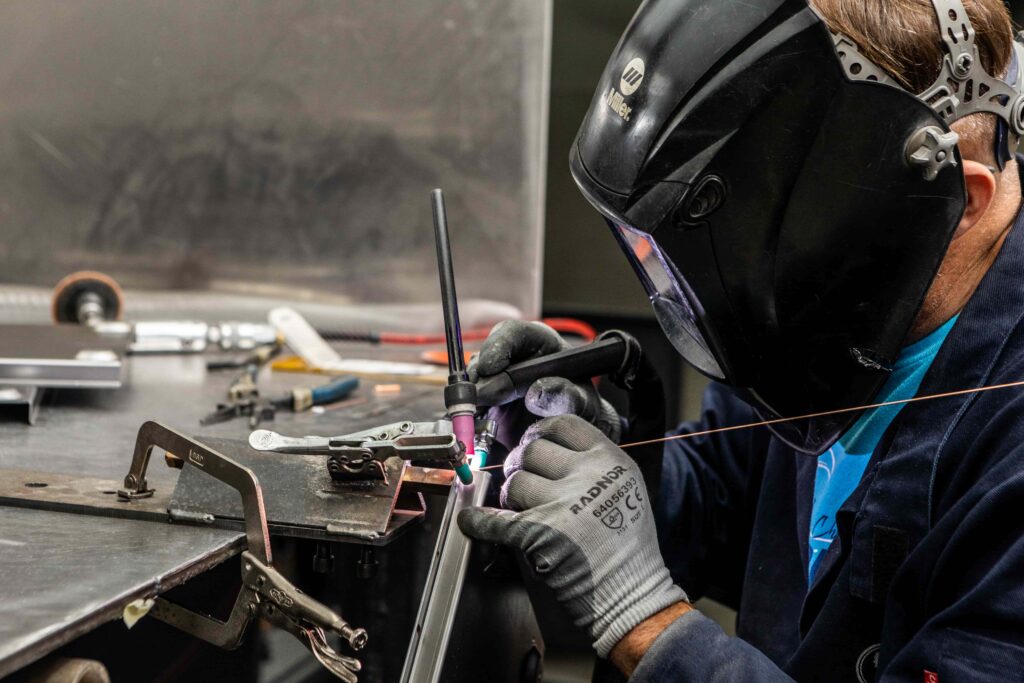Understanding the Various Sorts Of Welding Techniques and Solutions Offered

Overview of Welding Techniques
Welding techniques encompass a varied series of approaches made use of to join products with each other permanently. One common approach is arc welding, which includes producing an electric arc in between the base and an electrode product to melt and fuse them with each other. This strategy is versatile and can be utilized with different steels, making it among the most extensively made use of welding procedures.

Furthermore, TIG welding, or Gas Tungsten Arc Welding (GTAW), is a exact and tidy welding method that makes use of a non-consumable tungsten electrode to produce the weld. TIG welding is generally used for thinner materials and provides outstanding control over the welding procedure. Overall, recognizing these various welding strategies is vital for picking the most suitable technique for different tasks.
Commonly Utilized Welding Techniques
A variety of typically used approaches are employed in the field of welding to successfully sign up with materials with each other. Among one of the most extensively used methods is Gas Steel Arc Welding (GMAW), also referred to as MIG welding. This technique makes use of a cord electrode that is fed through a welding gun, in addition to a shielding gas to shield the weld from contaminants airborne. Another usual method is Protected Steel Arc Welding (SMAW), or stick welding, which makes use of a flux-coated electrode to develop the weld. Tungsten Inert Gas (TIG) welding is favored for its accuracy and flexibility, making use of a non-consumable tungsten electrode to produce the weld. Flux-Cored Arc Welding (FCAW) is commonly used in industrial settings because of its high welding speed and mobility. Furthermore, Immersed Arc Welding (SAW) is suitable for producing deep welds on thick products. These frequently used welding techniques accommodate different requirements and products, supplying options for various welding applications.
Advanced Welding Solutions
Building upon the structure of frequently utilized welding techniques, the realm of innovative welding solutions incorporates cutting-edge strategies and modern technologies that push the boundaries of accuracy and efficiency in material signing up with processes. Advanced welding services usually involve specialized methods such as laser welding, electron light beam welding, and friction mix welding. Laser welding utilizes a highly concentrated beam of light of light to precisely sign up with metals with marginal heat-affected zones, making it suitable for complicated or delicate elements. Electron beam welding, on the various other hand, utilizes a high-velocity electron beam of light to develop deep weld penetrations in products like aerospace alloys or dissimilar metals. Friction mix welding, a solid-state joining process, allows the welding of materials that are challenging to fuse using standard methods, like aluminum and copper. These innovative strategies offer improved control over the welding procedure, leading to more powerful, more sturdy welds with reduced distortion and enhanced general high quality.
Specialized Welding Strategies

Another specialized welding method is laser light beam welding, where a very concentrated beam of light of light is used to sign up with metals with very little heat-affected areas and distortion. These specialized welding techniques display the variety and development existing in the area of welding, offering options for a wide range of industrial applications.

Picking the Right Welding Refine
Selecting the appropriate welding process is paramount in achieving optimal lead to metal fabrication and joining operations. With various welding strategies available, it is vital to take into consideration variables such as the kind of metal, thickness, joint style, and desired end result when choosing the right here ideal welding procedure - Welding Inspection Service. Amongst the usual welding techniques are Gas Metal Arc Welding (GMAW), Shielded Steel Arc Welding (SMAW), Gas Tungsten Arc Welding (GTAW), and Flux-Cored Arc Welding (FCAW) GMAW, additionally called MIG welding, is suitable for welding slim to thick metals and is versatile in various positions. On the other hand, SMAW, or stick welding, is a trustworthy technique for exterior and field welding because of its portability and simplicity. GTAW, or TIG welding, is ideal for welding slim materials and gives exact and top notch welds. FCAW is chosen for welding thick materials and is understood for its high welding rates. Understanding the characteristics of each welding procedure is vital see here now in selecting one of the most suitable method for a details welding job.
Final Thought
To conclude, recognizing the various sorts of welding strategies and services offered is essential for choosing the right method for a certain job. By understanding the frequently used welding techniques, progressed welding services, and specialized techniques, people can make enlightened decisions to make sure the success of their welding tasks. It is essential to take into consideration aspects such as products, job needs, and spending plan when selecting one of the most suitable welding process.
From standard approaches like stick welding to cutting-edge procedures such as laser welding, the world of welding provides a wide range of choices for joining steels with each other.In addition, TIG welding, or Gas Tungsten Arc Welding (GTAW), is a clean and specific welding method that uses a non-consumable tungsten electrode to create the weld. Advanced welding solutions commonly entail specialized techniques such as laser welding, electron beam welding, and friction stir welding. Among the typical welding techniques are Gas Metal Arc Welding (GMAW), Secured best site Metal Arc Welding (SMAW), Gas Tungsten Arc Welding (GTAW), and Flux-Cored Arc Welding (FCAW) By being aware of the generally used welding techniques, advanced welding solutions, and specialized techniques, people can make informed decisions to make sure the success of their welding projects.